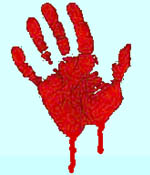
Death Penalty and Talmud Law | |||||||||||||||||||||||||||||||||||||||||
 In 1999, the US Supreme Court accepted a death penalty brief based wholly on Talmud law. The advocates say the Talmud has a better way. Does it?

Nathan Lewin, a prominent Washington lawyer, (33) is vice president of the National Jewish Commission on Law and Public Affairs and president of the American Section of the International Association of Jewish Lawyers and Jurists. According to the Cornell Chronicle, Nathan Lewin was deputy assistant attorney general during the Kennedy and Johnson administrations. (6) 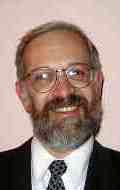
Rabbi Yitzchok Adlerstein calls the Talmud, "the world's oldest continuously-practiced legal code." (42) 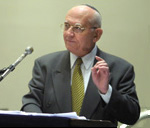 Rabbi Justice Menachem Elon, Israel Supreme Court judge (retired), speaking to the students at McGill University in October 2002. Rabbi Elon wrote the Israeli court opinion that formed the core of the argument used in the brief submitted to the US Supreme Court by Nathan Lewin. Elon also reviewed and approved Lewin's brief after it was written. Rabbi Justice Elon has written a three-volume work on Jewish law, and is billed as the world's foremost expert on the subject. The McGill Reporter quotes him: "Within Jewish heritage, there are many different views and opinions which have contributed to the depth and richness of Jewish law through all the generations. Such an approach is essential to Jewish thought."(34) 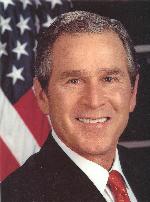
"US President George W. Bush sent greetings and applauded the institute for promoting an 'understanding of Judaism's rich tradition of legal thought. As we face new challenges and welcome new opportunities, our society must continue to promote good character and strong values. Through the study and teaching of Jewish law and philosophy you are contributing to a growing culture of service, citizenship, and responsibility in America,' Bush wrote." (1) 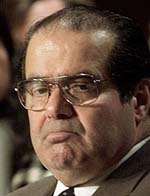
Justice Antonin Scalia was nominated to United States Court of Appeals for the District of Columbia Circuit by President Ronald Reagan and sworn in August 17, 1982. He was nominated Associate Justice of the Supreme Court of the United States by President Reagan and sworn in September 26, 1986. Along with Justices Ginsburg and Breyer, Justice Scalia attended the Kosher dinner held at the Supreme Court building on November 5, 2002, to mark the founding if the Washington-based National Institute for Judaic Law. See US v. Talmud Law. 
Rabbi Noson Gurary founded The National Institute for Judaic Law to educate American jurists and laws students about Judaic law. He is quoted in the Jerusalem Post: 
You can help in the battle for Truth, Justice, and the American Way! Fight the forces of censorship and suppression of the Talmud, and bring about understanding between peoples of different faiths. 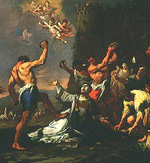 The Stoning of St. Stephen is described in Acts 7:57-60, and has been a popular subject for dramatic paintings and sculptures for hundreds of years. According to Acts, Stephen was condemned by a single priest and taken outside the city gates to be stoned. There is no mention of platform or pit in the St. Stephen incident, nor in any of the other stoning incidents in the New Testament. (38) 
Pouring Molten Lead  "The relevant passages from the Talmud demonstrate that the rabbis sought — with the scientific knowledge and means available to them in their time — to formulate the quickest, least painful, and least disfiguring methods of execution that the technology of the day would allow within the framework of Biblical texts." — National Jewish COLPA and IAJLJ in a brief to the US Supreme Court (9) 
 Socrates was condemned to death in 399 B.C. by the city of Athens for corrupting the youth with his philosophy. His gentle execution by a cup of hemlock was recorded for all time by his student Plato in Phaedo. Poison hemlock grows wild in Israel, and has since the Bible times.(37) 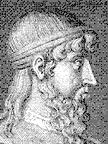 Plato recorded in the story of Socrates' death by a cup of hemlock (Conium maculatum). It causes paralysis of the motor nerves with some numbing, beginning in the lower extremities. As the symptoms progress up the body, paralysis reaches the diaphragm and heart and the victim dies. Until the final moment, the mind is untouched by the drug and fully aware. Judah the Prince, a scholar of Greek culture, almost certainly knew of Plato's account of Socrates' gentle and dignified death. Yet Judah the Prince insisted on refinements of the Talmudic formula (pouring molten lead in the mouth) that would guarantee that the condemned died from having molten lead poured in his mouth and from no other cause. (37) 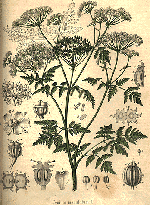
Poison Hemlock - Conium maculatum 
Then took they [the Pharisees] up stones to cast at him: but Jesus hid himself, and went out of the temple, going through the midst of them, and so passed by. — John 8:59 

Rabbi Dr. Jacob Neusner:  Alyza Lewin is a Washington, DC lawyer, the daughter of Nathan Lewin. She and her father are helping Lubavitch Rabbi Noson Gurary set up the National Institute for Judaic Law. In 1999, Alyza worked for the International Coalition for Missing Israeli Soldiers, a group that lobbies to put the issue on the international agenda.(35) ICMIS has signed a number of Senators and Congressmen to the cause and boasts of many celebrities on their Honorary Board of Directors, including Rep. Gary Ackerman (Congressman from New York), Elena Bonner (wife of the late Dr. Andrei Sakharov), Minister Natan Sharansky (Israel's Minister of the Interior), Secretary Jack Kemp (former US Senator, US Secretary of the Department of Housing and Urban Development, 1989-92), Joanne Kemp (wife of the Hon. Jack Kemp, and founder of Congressional Wives for Soviet Jewry), Serge and Beate Klarsfeld (Nazi hunters, authors, lecturers), Hon. Kaare Kristiansen (former Norwegian cabinet minister who resigned from the Nobel Prize Committee in protest of Arafat's award), Canadian Member of Parliament Irwin Cotler (international human rights lawyer, professor of law), Sen. Joseph Lieberman (US Senator from Connecticut), Sen. Charles Schumer (US Senator from New York), and Dr. Elie Wiesel). Rep. Tom Lantos spoke a tribute to the ICMIS into the Congressional Record on May 24, 2000.(36) |
This is the first in a 4-part series on the Death Penalty and Talmud Law. Supreme Court Considers Talmudic LawIn December 1999, the United States Supreme Court set a precedent by accepting for consideration an amicus curiae brief in a death penalty case (Bryan v. Moore). Aside from mentioning the Eighth Amendment of the US Constitution in passing, the brief was based wholly on Talmud law. The Jewish Journal reports: A man who will argue before the U.S. Supreme Court next year that his planned execution in Florida's electric chair constitutes "cruel and unusual punishment" can point to a 2,000-year-old Jewish law when he pleads his case. — The Jewish Journal (7) The Brief in a NutshellA copy of the brief is available at the Jewish Law website. (9) Lawyers Nathan and Alyza Lewin make it clear that their clients (two Jewish law advocacy groups) are not arguing for the return of Talmud execution methods, such as stoning. Rather, the advocates say that the humanitarianism of Talmud law should serve as our exemplar. In a nutshell, the brief states that the Talmud Sages wanted the death penalty:
In addition, the brief states that:
In the concluding paragraph of the brief, the advocates return to the theme of Talmud humanitarianism: CONCLUSION: If execution by the electric chair, as administered in Florida, results in unnecessary pain and disfigurement, it would be unacceptable under the principles underlying the traditional Jewish legal system applied 2000 years ago, and should also be unacceptable under the Eighth Amendment today. — National Jewish COLPA and IAJLJ (17) Since, according to so many experts, the Talmud is the Word of God, the basic book of Jewish law, and the foundation of Jewish culture (see What Is the Talmud? [31] and Critical Words of Talmud Study [32]), it is not surprising the advocates rely on the Talmud. There are, of course, later commentaries and summaries of Jewish law, such as the Mishneh Torah by Rabbi Moses ben Maimon (Maimonides, or the "Rambam") or the Shulchan Aruch by Joseph Caro (also Shulhan Arukh, Shulkhan Arukh, Shulchan'Aruch, Shulchan-Aruch, etc. by Yusef Karo, Yosef Karo, etc.). Rabbi Adlerstein, director of the Jewish Studies Institute of Yeshiva of Los Angeles and chair of Jewish Law and Ethics at Loyola Law School, adds to our understanding of why the advocates chose the Talmud. He states: … Lewin builds his case on the strength of what likely is the world's oldest continuously-practiced legal code. He holds up the performance of Florida's temperamental electric chair to the scrutiny of the Jewish Talmud, the backbone of Jewish law for the last two millennia. — Rabbi Adlerstein (19) We'll respect the opinion of the experts on this, of course. We'll rely upon the Talmud when evaluating the brief. We can read the words of the Sages themselves, here on line at Come and Hear™, and read the Talmud in full context with commentary from world-class scholars. Let's assist Professor Rabbi Jonathan Sacks, Chief Rabbi of the United Hebrew Congregations of the British Commonwealth to achieve his goal — let's find out about each other's faith. (See What We're About.) International Experts Compose the Brief
Examining the Work of the ExpertsThe advocates argue the Talmud Sages were guided by humanitarian concerns. The relevant passages from the Talmud demonstrate that the rabbis sought — with the scientific knowledge and means available to them in their time — to formulate the quickest, least painful, and least disfiguring methods of execution that the technology of the day would allow within the framework of Biblical texts … — National Jewish COLPA and IAJLJ (9) Despite the representation in the brief, the statements of the Talmud Sages reveal that the Talmud executions were purposely cruel and humiliating. The cruelty and humiliation were part of the punishment package. By stating this, we do not intend to criticize the ancient Sages: many modern Americans would welcome additional cruelty in the capital punishment process. It is our opinion that the writers of the brief did not do justice to the Talmud's death penalty philosophy and doctrines. Those who researched and wrote the brief were either rabbis themselves, or had access to the most highly qualified rabbis in the world. A copy of the Talmud is not impossible to secure, especially if you are a rabbi. We must therefore conclude that a truthful representation of the Talmud death penalty policy was not the primary purpose of the brief. Several articles in the Jewish press noted that — aside from a passing reference to the Eighth Amendment — the brief contained no mention of US law. It was proudly reported that the brief cited only Talmud law. See footnotes (2), (5), and (7). We might therefore conclude that a primary purpose of the brief is to set a Talmud precedent before the Supreme Court and the US justice system. It is also possible that the brief is intended to position the Talmud as a humanitarian bulwark in the minds of death penalty reformers. Why Multiple Methods for Execution?Elon, Lewin, et al states that Jewish law provides four methods of execution: Stoning, burning, strangulation, and decapitation. (13) As we shall see, the rabbinic law of the Talmud prescribes a number of other methods of capital punishment as well, but let us begin by raising a question: If the rabbis of the Talmud intended that execution be carried out as quickly and as painlessly as possible, why didn't the rabbis prescribe just one method of execution — the quickest and least painful? Why did they prescribe so many different forms of execution? The brief gives a hint: … the particular form of execution to be administered under Jewish law depended upon the nature of the offense. Each of these forms, however, had to be administered in the most humane manner possible. — National Jewish COLPA and IAJLJ (13) Some Methods Of Execution More "Severe" Than OthersWhat Elon, Lewin, et al. reveal is interesting, but what they omit is vital. By their selection, they paint a false picture. The rabbis of the Talmud ranked the methods of execution according to the suffering and pain each brought. Some crimes were more grievous than others; the worst crimes deserved the most "severe" deaths. Let us now turn to the Soncino Talmud and read the words of the rabbis: MISHNAH. HE WHO INCURS TWO DEATH PENALTIES IMPOSED BY BETH DIN IS EXECUTED BY THE SEVERER. IF HE COMMITTED ONE SIN FOR WHICH A TWOFOLD DEATH PENALTY IS INCURRED, HE IS EXECUTED BY THE SEVERER … — Babylonian Talmud, Tractate Sanhedrin 81a GEMARA. … Now we find this law [of execution by the sword] when one murdered a slave; whence do we know that this law holds good if he murdered a free man? — Surely this can be deduced by reasoning from the minor to the major: if the murderer of a slave is decapitated, shall he who slays a free man be only strangled! Now, this answer agrees with the view that strangulation is an easier death; but what of the view that strangulation is more severe? — Babylonian Talmud, Tractate Sanhedrin 52b GEMARA. … But might it not be argued that the reason the Divine Law wrote 'yumath' is to [indicate] an easier death, i.e., to commute death by the sword to death by strangulation? Now, on the view that strangulation is a severer death, it is correct; but according to the view that strangulation is an easier death [than decapitation], what is there to be said [against it]? — Babylonian Talmud, Tractate Sanhedrin, 15b GEMARA. … Stoning is severer than burning, since thus the blasphemer and the idol-worshipper are executed. Wherein lies the particular enormity of these offences? — Because they constitute an attack upon the fundamental belief of Judaism. On the contrary, is not burning more severe, since that is the punishment of a priest's adulterous daughter; and wherein lies the greater enormity of her offence: in that she profanes her father? — Babylonian Talmud, Tractate Sanhedrin 49b GEMARA. … Stoning is severer than slaying by the sword, since it is the punishment of a blasphemer and an idol worshipper, the greater enormity of whose offence has already been stated. On the contrary, is not death by the sword more severe, since that is the penalty for the inhabitants of a seduced city, the graver character of whose sin is proved by the fact that their property is destroyed? — Now, let us consider: whose crime is greater; that of the seducer or of the seduced? Surely that of the seducer. And it has been taught: The seducers of a seduced city are executed by stoning. — Babylonian Talmud, Tractate Sanhedrin 50a From this we see that the National Jewish COLPA/IAJLJ statements — that the rabbis intended the quickest, least painful, most humane execution possible — do not represent rabbinical views fairly. Now let's turn to the statements in the National Jewish COLPA/IAJLJ brief, made in all solemnity, to the Supreme Court of the United States: Talmud Executions — Details— StoningProbably the most famous of all Jewish execution methods is stoning, and it is to that method we will first turn our attention. (14) From Mr. Lewin's statement in the Preamble that the rabbis of the Talmud worked "within the framework of Biblical texts," we might expect the Talmud to require stonings as described in Leviticus 24:14, the first stoning in the Bible. That form of stoning has been portrayed by artists of Christendom through the centuries. But the Talmud has its own forms. Here is an excerpt from the brief:
— National Jewish COLPA and IAJLJ (15)
— National Jewish COLPA and IAJLJ (5) — Stoned After Push Into PitNote that although Lewin cites Sanhedrin 45a, he does not quote the words of the translation he was using. When we read the Soncino translation of Sanhedrin 45a, we get a different picture from the one Lewin paints. [In all Talmud cites, bracketed interpolations occur in the Soncino text. They were not added by the Come and Hear™ editor.] MISHNAH. THE PLACE OF STONING WAS TWICE A MAN'S HEIGHT. ONE OF THE WITNESSES PUSHED HIM BY THE HIPS, [SO THAT] HE WAS OVERTURNED ON HIS HEART. HE WAS THEN TURNED ON HIS BACK. IF THAT CAUSED HIS DEATH, HE HAD FULFILLED [HIS DUTY]; BUT IF NOT, THE SECOND WITNESS TOOK THE STONE AND THREW IT ON HIS CHEST. IF HE DIED THEREBY, HE HAD DONE [HIS DUTY]; BUT IF NOT, HE [THE CRIMINAL] WAS STONED BY ALL ISRAEL … — Babylonian Talmud, Tractate Sanhedrin 45a The translator, Jacob Shachter, tells us in a footnote that this height would be "six cubits, the normal height to the shoulders being three cubits" (a cubit being 17 to 22 inches, Shachter estimates a height between 8.5 and 11 feet, or 259 and 335 cm., an estimate that should be modified in light of recent information about the smaller stature of men in those times). All other things being equal, a fall of six cubits would not guarantee either a painless or an instantaneous death. So, despite what the advocates say, the Talmud text reveals that in a significant number of cases the condemned man did not die from a fall "twice a man's height," since witnesses, and sometimes onlookers ("all Israel"), would have to stone him to death. A fall of 8.5 to 11 feet might often injure, but less often kill. However, the fall might be useful. Injuries sustained in the fall might immobilize the condemned man and make him an easier target for the stoners. Note also that this method of execution is called "stoning," rather than "falling" or "pushing." The appellation gives witness: Death resulted from stoning, not falling. Come and hear the rabbis discussing the issue in the following Gemara: GEMARA. … 'Just as a pit to be reckoned as causing death must be ten handbreadths [deep], so must all other [excavations] be sufficient to cause death, viz., ten handbreadths'? — R. Nahman said in Rabbah b. Abbahu's name: Scripture states, Love thy neighbour as thyself; i.e., choose an easy death for him. But if so, it [sc. the place of stoning] should be still higher! — [That, however, is not so] to prevent disfiguration. — Babylonian Talmud, Tractate Sanhedrin 45a In contrast to the statement in the brief, Sanhedrin 45a (Soncino translation) does not mention either a platform or a stone floor. Instead, the convict is pushed into a pit. The statement in the brief that the height was sufficient to cause "instantaneous death" (15) is simply not credible, when we put the details into a real setting. On the subject of disfigurement: Being hammered, bludgeoned, or crushed to death by stones or boulders might be every bit as disfiguring as dying from a fall — and a good deal slower. GEMARA. … But has it not been taught: R. Simeon b. Eleazar says: 'A stone was there which it took two men to lift, — he lifted that and dropped it on his [the victim's ] chest … — Babylonian Talmud, Tractate Sanhedrin 45b It is unlikely that a large stone (one that took two men to lift), dropped on a standing or a prostrate man, could be aimed accurately enough to hit only the chest and avoid the face or head. The claim of Lewin and the Talmud Sages that avoidance of disfigurement was a major concern should be carefully evaluated. — Stoned And Then HangedThe Orthodox advocates failed to mention that in some or all cases, after the condemned man or woman was stoned to death, he or she was hanged as well. MISHNAH. ALL WHO ARE STONED ARE [AFTERWARDS] HANGED: THIS IS R. ELIEZER'S VIEW, THE SAGES SAY: ONLY THE BLASPHEMER AND THE IDOLATER ARE HANGED. A MAN IS HANGED WITH HIS FACE TOWARDS THE SPECTATORS, BUT A WOMAN WITH HER FACE TOWARDS THE GALLOWS: THIS IS THE VIEW OF R. ELIEZER … — Babylonian Talmud, Tractate Sanhedrin 45b How were the bodies hanged? MISHNAH. HOW IS HE HANGED? — THE POST IS SUNK INTO THE GROUND WITH A [CROSS-] PIECE BRANCHING OFF [AT THE TOP]. AND HE BRINGS HIS HANDS TOGETHER ONE OVER THE OTHER AND HANGS HIM UP [THEREBY]. R. JOSE SAID: THE POST IS LEANED AGAINST THE WALL, AND HE HANGS HIM UP AFTER THE FASHION OF BUTCHERS … — Babylonian Talmud, Tractate Sanhedrin 46a Those already dead can feel no pain, so hanging a dead man's body "after the fashion of butchers" cannot be deemed cruel. However, we might expect his body would become even more disfigured by a post-mortem hanging; certainly a post-mortem hanging would do nothing to preserve the dignity of the deceased. To the modern mind, the only conceivable purpose for this "hanging" would be to shame the corpse and thereby frighten the general public into conforming behavior. Moreover, the rite of hanging after stoning is not prescribed in the Bible. The rite is purely rabbinical. The Sanhedrin 45b ritual of stoning is not "within the framework of Biblical texts," is certainly disfiguring, and rather than preserving his dignity, publicly degrades the condemned. Elon, Lewin, et al. mislead the Court again. If we are to find out about each other's faiths, as Chief Rabbi Jonathan Sacks urges, it is essential that we all be truthful. It is indeed disappointing to learn that Rabbi Judge Elon — an Israeli Supreme Court Justice (retired) and visiting lecturer to US universities — participated in such a misrepresentation of the Talmud on the subject of capital punishment. — Stoned While StandingRecall what the National Jewish COLPA and the IAJLJ told the Supreme Court: A casual reader of the Biblical text might assume that the execution described as "stoning" is carried out by hurling stones at the condemned individual until he dies from the force of the objects thrown at him — — National Jewish COLPA and IAJLJ (15) Let us see whether the words of the Sages support this assertion. Come and hear … GEMARA. … Shila taught … in the case of a [betrothed] damsel [who played the harlot]. If witnesses appeared against her in the house of her father-in-law [testifying] that she had played the harlot in her father's house she is stoned at the door of her father's house, as if to say, 'See the plant that you have reared'. If witnesses came [to testify] against her in her father's house that she played the harlot in his house she is stoned at the entrance of the gate of the city … — Babylonian Talmud, Tractate Kethuboth 44b - 45a Note that in the above, there is no mention of digging a pit so the victim could fall to her death; and still no mention of the stone floor. Rabbi Dr. H. Freedman adds a historical note to a nearby passage that may shed light on this question:
— Rabbi Dr. Freedman (29) Those words ("stoning … was the means of bringing about the actual death"), coming from the pen of Talmud scholar and translator, Rabbi Freedman, Ph.D., seem to carry more weight than a statement by a Washington lawyer and a retired Israeli judge. Could Elon, Lewin, et al. be attempting to make Talmud doctrine more acceptable to other death penalty reformers who might read the brief? — Stoned After Push From ScaffoldA scaffold was sometimes used in stoning. GEMARA. … The scaffold [for stoning] was of the height of two men's statures. And it has been taught regarding this: When you add the stature of the convict there will be there the height of three statures. Now, if you assume that a fall can be fatal even from a height of less than ten handbreadths, why was such a great height as that necessary? — But even according to your argument, why not make the height ten handbreadths only? This must therefore be explained in accordance with R. Nahman, for R. Nahman stated that Rabbah b. Abbuha had said: Scripture says, And thou shalt love thy neighbour as thyself, [which implies], 'thou shalt choose for a convict the easiest possible execution.' But if so, why not raise it still higher? — He would then become disfigured altogether. — Babylonian Talmud, Tractate Baba Kamma 51a Baba Kamma 51a portrays the condemned man falling from the scaffold a distance of "two men's statures," and a footnote refers us to Sanhedrin 45a, with its explanatory footnote. The condemned would land on the ground where the stoners are standing. If he landed prostrate, stones would descend upon him from a height of three or four feet, depending on the height of the stoners. If he landed on his feet, he would be stoned in the same fashion as the betrothed damsel who played the harlot — stoned standing, by standing stoners. Note: Expressing humanitarian concerns about disfigurement, the rabbis prescribe a fall from a height they believe would not always kill. Falling from a great height would kill instantly; had the rabbis wanted the quickest and least painful death, the scaffold would be raised as high as possible. At this point we must begin to suspect Lewin and his colleagues did not expect us to read the Talmud ourselves. But as responsible Americans, curious about Judaism and concerned about capital punishment, that's exactly what we're doing. — New Testament Reportage Of StoningsBefore we leave our discussion of stoning, we should point out that the stoning described in Tractate Kethuboth 44b-45a (betrothed damsel who played the harlot) is more in accord with the stoning Christians have always understood from the New Testament. Read about the stoning of St. Stephen, Acts, Chapter 7, particularly 7:57-60. The narrative depicts just such a stoning as Christian painters have depicted for centuries — level ground, no pushing, no scaffolds or pits with stone floors: the victim apparently died from no cause other than "the force of the objects thrown at him," despite the Elon/Lewin representation to the Supreme Court. The New Testament also contains the famous incident described by John in 8:7, wherein a woman, arrested in the act adultery, is brought to Jesus. Jesus challenges the Pharisees: "He that is without sin among you, let him first cast a stone at her." (KJV) There is no mention of a pit, nor a stone floor, nor did Jesus challenge anyone to "push" the woman. John 8:59 and John 10:22-39 give accounts of attempts by the Pharisees to stone Jesus. There is no mention of a pit or a scaffold.
It is clear that the stonings in these accounts were to be performed with the stoners and the victims at ground level. — Burned With Molten LeadMr. Lewin refers us to two Old Testament verses on execution by burning: (13)
— Leviticus 20:14 (KJV)
— Leviticus 21:9 (KJV) But the Orthodox advocates make it clear that the Jewish religion not only rejects, but condemns that Old Testament model. The brief states:
— National Jewish COLPA and IAJLJ (18) Why was the court that burned the rabbi's daughter in the Biblical fashion "not knowledgeable"? Because the court should have followed the directives in the Talmud instead those in the Bible. Note that the Elon/Lewin brief does not quote the Talmud directly when describing execution by burning. But, let us go directly to the text of Sanhedrin 52a: MISHNAH. THE MANNER IN WHICH BURNING IS EXECUTED IS AS FOLLOWS: HE WHO HAD BEEN THUS CONDEMNED WAS LOWERED INTO DUNG UP TO HIS ARMPITS, THEN A HARD CLOTH WAS PLACED WITHIN A SOFT ONE, WOUND ROUND HIS NECK, AND THE TWO LOOSE ENDS PULLED IN OPPOSITE DIRECTIONS, FORCING HIM TO OPEN HIS MOUTH. A WICK WAS THEN LIT … — Babylonian Talmud, Tractate Sanhedrin 52a We will postpone discussion of the practice of burying the condemned in animal manure until later; notice, however, Elon, Lewin, et al. fail to mention that aspect of the Talmud execution law. For now, let us focus on the "wick" our Orthodox advocates say will bring instant death. Come and hear the discussion as a Sage asks: GEMARA. What is meant by a WICK? — R. Mathna said: A lead bar. (1) — Babylonian Talmud, Tractate Sanhedrin 52a Talmud scholar Rabbi Dr. H. Freedman, the translator of this section of the Soncino Talmud's Tractate Sanhedrin, appended a footnote to this passage:
— Rabbi Dr. Freedman So now we learn that "wick" thrown into the condemned's mouth was actually a melted lead bar. We can get more information on death by burning from Tractate Yebamoth. In Tractate Yebamoth 6b, the Sages are discussing whether it is permissible to kindle a fire on the Sabbath, provided the fire is used to execute someone. In a footnote to the discussion, Talmud scholar Rev. Dr. Israel Slotki, translator of the Soncino Tractate Yebamoth, states: I.e., execute no death penalty of burning on the Sabbath. The death penalty of 'burning' was executed by pouring molten lead through the condemned man's mouth into his body, thus burning his internal organs. — Rev. Dr. Slotki (20) Now let's continued with Tractate Sanhedrin doctrines on the wick: MISHNAH. … A WICK WAS THEN LIT AND THROWN INTO HIS MOUTH, SO THAT IT DESCENDED INTO HIS BODY AND BURNT HIS BOWELS … Babylonian Talmud, Tractate Sanhedrin 52a If molten lead were thrown into the mouth of the condemned, it seems unlikely it would travel all the way down the digestive tract to reach the bowels. Every tissue it touched would be destroyed, including the structures in the neck. The actual cause of death would likely be suffocation. Whether it were "thrown" or poured, it would splash on his face and cause significant disfigurement. On the other hand, if it were a hot lead bar, it could conceivably be shoved down the condemned man's throat with enough force to reach his bowels. However, the force of this operation would surely tear the lips, smash the teeth, sear the lower face, possibly crush the spinal column, and cause severe disfigurement. Both processes sound painful. Thus we see the medical details of execution by means of a "wick" that "descended into his body and burnt his bowels" are arguable. Let us continue with this Mishnah: MISHNAH. … R. JUDAH SAID: SHOULD HE HOWEVER HAVE DIED AT THEIR HANDS [BEING STRANGLED BY THE BANDAGE BEFORE THE WICK WAS THROWN INTO HIS MOUTH, OR BEFORE IT COULD ACT], HE WOULD NOT HAVE BEEN EXECUTED BY FIRE AS PRESCRIBED. HENCE IT WAS DONE THUS: HIS MOUTH WAS FORCED OPEN WITH PINCERS AGAINST HIS WISH, THE WICK LIT AND THROWN INTO HIS MOUTH, SO THAT IT DESCENDED INTO HIS BODY AND BURNT HIS BOWELS … — Babylonian Talmud, Tractate Sanhedrin 52a This passage indicates a quick death was not the top priority: the rabbis express concern that the condemned will die too soon to experience the intended death-by-molten-lead. Once again, the Elon/Lewin brief misstates both the fact and the motive behind Talmud executions. Let us review a statement from the brief: It is clear that the rabbis sought to administer the most humane forms of capital punishment then available. These principles should be applied by this Court to evaluate whether execution by the electric chair, as administered in Florida, results in unnecessary pain and disfigurement. If electrocution, as currently administered, results in needless pain and mutilation, it would not meet the rationale of Jewish Law as administered 2000 years ago and should not be acceptable today under the evolving standards of the Eighth Amendment. — National Jewish COLPA and IAJLJ (9) — The Humanitarianism of Judah the PrinceIt is significant that R. Judah (also known as Judah the Prince, Judah Ha-Nasi, or simply Rabbi) is the speaker in the above Mishnah (Sanhedrin 52a). Recall that in More Critical Words of Talmud Study, we learned that he formulated the Mishnah. Among other things, the Mishnah specifies which crimes are capital crimes, and specifies the various procedures for execution. R. Judah (Judah the Prince) was born in 132 A.D. (some say 135 A.D.), and he died in 219. He was a hereditary Chief Priest of the Sanhedrin (thus, "The Prince") and is one of the most revered rabbis in Judaism. Of Judah the Prince, Rabbi Dr. Hertz writes, "He was a descendant of Hillel in the seventh generation, and a man of uncommon ability, wide culture and lofty virtue." (27) (Hillel the Babylonian, another Talmud giant, lived in the first pre-Christian century. [28]) Judah the Prince came from a wealthy and influential family. He was well educated and versed in Greek thought and philosophy. (21) He was "especially acquainted with the Greek language, which he preferred to Syriac, the popular language of Palestine at that time," according to Rabbi Michael Rodkinson (22). It is inconceivable that Judah the Prince was not familiar with Plato's Phaedo, wherein Plato gives a graphic and moving account of Socrates' gentle execution in the year 399 B.C. by means of a cup of hemlock, (23) made from the weed Conium maculatum, (24) According to the sources, R. Judah not only edited the Mishnah but also utilized it in practice in the course of his studies with his contemporaries. He sometimes changed his opinion on certain issues and consequently introduced amendments into the mishayot. At times he was unable to introduce certain of his new formulations or theories into the work since a previous ruling had already been accepted … — Steinsaltz (26) We see here that this highly influential rabbi changed his opinion on some issues. Had he chosen, he could have replaced stoning, burning, strangling, decapitation, et al. with the gentle hemlock of the Greeks — if indeed, humanitarianism were the prime concern of the Talmud Sages. Instead, however, as shown by the Mishnah above, R. Judah refined the regulations for molten lead, arguing that the condemned should not be allowed to die by strangulation before the molten lead was poured in his mouth. According to scholars at Bar-Ilan University in Israel, Conium maculatum (which grows wild in Israel) is the poisonous plant mentioned in Jeremiah 8:14 and Deuteronomy 32:23. The Bar-Ilan scholars point out that the plant was a well-known nuisance in the countryside, and its poisonous properties were well-known, appearing as a frequent metaphor in the Scriptures. (4) Recall that the National Jewish COLPA and IAJLJ argue that the rabbis of the Talmud are a model of humanitarianism that we should follow: The relevant passages from the Talmud demonstrate that the rabbis sought — with the scientific knowledge and means available to them in their time — to formulate the quickest, least painful, and least disfiguring methods of execution that the technology of the day would allow within the framework of Biblical texts. — National Jewish COLPA and IAJLJ (9) We can now see that the statement is untrue. If the rabbis had wanted the most humane executions, they could have taken a page from the Greeks and used hemlock, a local and well-known weed. True, poison hemlock is not prescribed by the Old Testament; but neither are pouring molten lead down the throat, or a number of other Talmudic execution methods that we will examine in a moment. Neither humanitarianism nor Biblical exactness seems to be the prevailing concern. — Strangled in a Pit of DungMISHNAH. STRANGULATION WAS THUS PERFORMED: — THE CONDEMNED MAN WAS LOWERED INTO DUNG UP TO HIS ARMPITS, THEN A HARD CLOTH WAS PLACED WITHIN A SOFT ONE, WOUND ROUND HIS NECK, AND THE TWO ENDS PULLED IN OPPOSITE DIRECTIONS UNTIL HE WAS DEAD. — Babylonian Talmud, Tractate Sanhedrin 52b — Decapitated With Sword or AxeMISHNAH. EXECUTION BY THE SWORD WAS PERFORMED THUS: THE CONDEMNED MAN WAS DECAPITATED BY THE SWORD, AS IS DONE BY THE CIVIL AUTHORITIES. R. JUDAH SAID: THIS IS A HIDEOUS DISFIGUREMENT; BUT HIS HEAD WAS LAID ON A BLOCK AND SEVERED WITH AN AXE. THEY REPLIED, NO DEATH IS MORE DISFIGURING THAN THIS. — Babylonian Talmud, Tractate Sanhedrin, 52b It is noteworthy that decapitation — the most disfiguring form of execution in opinion of the rabbis — is mandated for non-Jews who break the rabbinical Noahide Laws (see Sanhedrin 56a). For more information on the Noahide Laws, see America's New Government Church. — Hanged On GallowsHanging on a gallows is mentioned in this Sanhedrin Gemara. Note that the gallows were provided by the community. GEMARA. … R. Huna said: It is obvious to me that the stone with which one is stoned, the gallows on which one is hanged, the sword with which one is decapitated, and the cloth with which one is strangled, are all provided by the Community. — Babylonian Talmud, Tractate Sanhedrin 43a In Tractate Sanhedrin 45b, a case is discussed of 80 women hanged for witchcraft. See Accusation and Trial. (10) — Smashing Skull With ClubsA priest who performs ritual while unclean gets no formal trial; his skull is smashed with clubs by his colleagues when they notice his offense. MISHNAH. … IF A PRIEST PERFORMED THE TEMPLE SERVICE WHILST UNCLEAN, HIS BROTHER PRIESTS DO NOT CHARGE HIM THEREWITH AT BETH DIN, BUT THE YOUNG PRIESTS TAKE HIM OUT OF THE TEMPLE COURT AND SPLIT HIS SKULL WITH CLUBS. — Babylonian Talmud, Tractate Sanhedrin 81b — Poisoning With "Bitter Water"When a man suspects his wife of infidelity but has no definite evidence, he may request the priest put her through a trial by ordeal (prescribed by Numbers 5:12-31). The suspected woman (the sotah) is brought to the temple where she is forced to drink "bitter water." By the magic of the ordeal, the sotah dies if she is guilty, but lives if she is innocent. We will have more to say about the dignity accorded the sotah during the trial procedure in Accusation and Trial. (10) MISHNAH. … AND THIS WATER THAT CAUSETH THE CURSE SHALL GO INTO THY BOWELS AND MAKE THY BELLY TO SWELL, AND THY THIGH TO FALL AWAY … — Babylonian Talmud, Tractate Sotah 17a If the woman is guilty, she dies. GEMARA. … and if she be not innocent, she reverts to dust. (7) — Babylonian Talmud, Tractate Sotah The translator, Rev. Dr. Abraham Cohen, amplifies the text with this footnote:
— Rev. Dr. Abraham Cohen MISHNAH. … SHE HAD SCARCELY FINISHED DRINKING WHEN HER FACE TURNS GREEN, HER EYES PROTRUDE AND HER VEINS SWELL; AND IT IS EXCLAIMED, 'REMOVE HER THAT THE TEMPLE-COURT BE NOT DEFILED.' —Babylonian Talmud, Tractate Sotah 20a — Stomach BurstingFor a portrayal of this mode of execution, read Tractate Sanhedrin 81b, both Mishnah and Gemara. The condemned is fed the "bread of adversity and water of affliction" which shrinks and blocks his intestines. Then he is fed barley bread until his stomach bursts. For further discussion, see Accusation and Trial. (10)
Thank you for your consideration of the above,
NEXT: Death Penalty 2: Accusation and Trial
Endnotes:
| ||||||||||||||||||||||||||||||||||||||||
Footnotes:
Full specifics for each of the printed sources are provided in the Bibliography. Outside URLs were valid at the time this article was written. However, be mindful that URLs do change.
- "Jewish law institute launched in DC," Jerusalem Post, November 9, 2002, http://www.jpost.com/servlet/Satellite?pagename=JPost/A/JPArticle/ShowFull&cid=1036830287246, now moved to http://pqasb.pqarchiver.com/jpost/index.html?ts=1042784008 cached at http://www.come-and-hear.com/editor/cp-jp-11-09-2002
See also footnote 2 - "Jewish Law Comes to D.C.," The Jewish Week, January 8, 2003, http://www.thejewishweek.com/news/newscontent.php3?artid=7074 cached as http://www.come-and-hear.com/editor/cp-jw-01-08-03
- National Council of Young Israel, http://youngisrael.org/articles/25002.htm cashed at: http://www.come-and-hear.com/editor/cp-lewin-yi
- Prof. Yehuda Feliks, August 31, 2002, Lectures on the weekly Torah reading by the faculty of Bar-Ilan University in Ramat Gan, Israel: http://www.biu.ac.il/JH/Eparasha/nitzavim/fel.html cached at http://www.come-and-hear.com/editor/cp-bar-ilan
- Rabbi Yitzchok Adlerstein, director of the Jewish Studies Institute of Yeshiva of Los Angeles, chair of Jewish Law and Ethics at Loyola Law School, and director of Project Next Step at the Simon Wiesenthal Center: http://www.jewishjournal.com/old/deathpenalty2.3.10.0.htm cached at http://www.come-and-hear.com/editor/cp-adlerstein
- Cornell Chronicle, May 7, 1998, http://www.news.cornell.edu/Chronicle/98/5.7.98/Young_Israel.html
- "Jewish Law Cited in Death Penalty Case," Jewish Journal, January 7, 2000, http://www.jewishjournal.com/old/deathpenalty.1.7.0.htm cached at http://www.come-and-hear.com/editor/cp-jj-01-07-2000
- "Who's Who in the OU," Union of Orthodox Jewish Congregations of America, http://www.ou.org/orthodoxunion/layleadership.htm cached at http://www.come-and-hear.com/editor/cp-lewin1
- Brief of the National Jewish Commission on Law Public Affairs, et al (hereinafter, brief) "Interest of the Amici Curiae": http://www.jlaw.com/Briefs/capital1.html cached at: http://www.come-and-hear.com/editor/cp-brief-amicus.
The first organization is the National Jewish Commission on Law and Public Affairs, "COLPA." Note that the first words, "National Jewish" have been dropped from the acronym. For purposes of accuracy, this writer will refer to that organization by the acronym "National Jewish COLPA." The second organization is the American Section of the International Association of Jewish Lawyers and Jurists, "IAJLJ."- Accusation and Trial available at http://www.come-and-hear.com/editor/capunish_2.html
- "Argument," Brief, Footnote 5: http://www.jlaw.com/Briefs/capital2.html cached at: http://www.come-and-hear.com/editor/cp-brief-argument.
- New York University School of Law newsletter, http://www.law.nyu.edu/globallawschool/newsletters/spring1999/globalfaculty.html http://www.come-and-hear.com/editor/cp-elon2
- "Argument," Introduction, Brief: http://www.jlaw.com/Briefs/capital2.html cached at: http://www.come-and-hear.com/editor/cp-brief-argument
- Many people believe stoning originated with the ancient Israelites; however, stoning may have been originally an Egyptian practice. Exodus 8:26 gives an account of a conversation between Moses and the Egyptian Pharaoh. Moses expresses a concern that, should the Israelis make sacrifices to LORD God in Egypt, the Egyptians will stone them. Recalling that Moses was raised an Egyptian and knew Egyptian ways, it seems that public stoning was a practice among the ancient Egyptians. In subsequent passages (for example, Leviticus 24:10-23), we see evidence that stoning was appropriated by the Israelis and attributed to God. "And the LORD spake unto Moses," and ordered Moses to stone those who cursed and blasphemed Him. But of course Moses already knew about stoning. If we believe that God did in fact tell Moses to execute by stoning, we are left to explain the remarkable coincidence that God also taught the pagan Egyptians the Godly execution method.
- "Argument I.A.," Brief: http://www.jlaw.com/Briefs/capital2.html cached at: http://www.come-and-hear.com/editor/cp-brief-argument
- "Foreword" by Rabbi Dr. Jacob Neusner, Everyman's Talmud, page x
- "Conclusion," Brief: http://www.jlaw.com/Briefs/capital2.html cached at: http://www.come-and-hear.com/editor/cp-brief-argument
- "Argument I.B.," Brief: http://www.jlaw.com/Briefs/capital2.html cached at: http://www.come-and-hear.com/editor/cp-brief-argument
- "Jewish Law and the Supreme Court: Happy Millennium From an Ancient Legal Tradition," Project Next Step by Rabbi Yitzchok Adlerstein, http://projectnextstep.org/adlerstein-articles/jewish-law-supreme-court.htm cached at http://www.come-and-hear.com/editor/cp-adlerstein2
- Babylonian Talmud, Rev. Dr. Israel Slotki, translator of Tractate Yebamoth 6b, Seder Nashim, Vol. I, page 26, note 4, Soncino Press, 1935: available on this website as Yebamoth 6b, note 29.
- Jewish Virtual Library, http://www.us-israel.org/jsource/biography/hanasi.html cached as http://www.come-and-hear.com/editor/cp-judah
See also Rev. Dr. Abraham Cohen, Everyman's Talmud, page xliii- The History of the Talmud, Vol. II, page 20, available here as http://www.come-and-hear.com/talmud/rodkin_ii1.html#p20
- "The Death Scene" from Plato's Phaedo, http://socrates.clarke.edu/aplg0190.htm cached at http://www.come-and-hear.com/editor/cp-plato1
- The properties of poison hemlock, Conium maculatum are described in many places, including Viable Herbal Solutions: http://www.viableherbalsolutions.com/herbdesc2/1hemlock.htm cached at http://www.come-and-hear.com/editor/cp-hemlock
- Dr. Wolfgang Sadée's Laboratory, http://itsa.ucsf.edu/~wsadee/socrates.html
- Essential Talmud, page 38
- Babylonian Talmud, "Introduction," Seder Nezikin, Nezikin Vol. I, page xvi available at http://www.come-and-hear.com/talmud/nezikin_h.html#xvi
- Ibid, page xv available at http://www.come-and-hear.com/talmud/nezikin_h.html#xv
- Babylonian Talmud, Sanhedrin 45a, Soncino Talmud, page 296, footnote 6, appearing as Sanhedrin 45a, footnote 36, available at http://www.come-and-hear.com/sanhedrin/sanhedrin_45.html#45a_36
- The Talmud studies "Sentence and Execution," "Accusation and Trial," "Abuse of Context," and "US v. Talmud Law" are found at http://www.come-and-hear.com/editor/capunish_1.html, http://www.come-and-hear.com/editor/capunish_2.html, http://www.come-and-hear.com/editor/capunish_3.html, and http://www.come-and-hear.com/editor/capunish_4.html, respectively.
- The article "What Is the Talmud?" is found at http://www.come-and-hear.com/editor/whatis.html
- The article "Critical Words of Talmud Study" is found at http://www.come-and-hear.com/editor/critwords_1.html
- Photographed in Jerusalem by Debbie Hill, The Jerusalem Post Internet Edition, Monday, February 22, 1999, http://www.jpost.com/com/Archive/22.Feb.1999/Features/Article-24.html
- McGill Reporter, October 10, 2002, Volume 35 Number 03, http://www.mcgill.ca/reporter/03/elon/
- The International Coalition for Missing Israeli Soldiers, http://www.mia.org.il/photos.html
- Ibid, http://www.mia.org.il/about.html
- Detail of The Death of Socrates, by Jacques-Louis David
- Stoning of St. Stephen, unknown artist, Rome, 18th century oil on canvas
- For a short history of prominent cases fought by Nathan Lewin, see "Defender of the Tribe," Jerusalem Post, February 22, 1999: http://www.jpost.com/com/Archive/22.Feb.1999/Features/Article-24.html cached at http://www.come-and-hear.com/editor/cp-lewin-cases
- "Herrera v. Collins (91-7328), 506 U.S. 390 (1993)," The Legal Information Institute, http://supct.law.cornell.edu/supct/html/91-7328.ZC1.html cached at http://www.come-and-hear.com/editor/cp-herrera
also "Leonel Torres Herrera," Amnesty International Dornbirn, http://members.magnet.at/ai.dornbirn/herrerae.htm cached at http://www.come-and-hear.com/editor/cp-herrera-ai
© Copyright Carol A. Valentine, 2003. See copyright statement at http://www.come-and-hear.com/copyright.html
NEXT: Death Penalty 2: Accusation and Trial
| Navigate This Site | |
 | |
| Home | |
| Valentine | |
| Dilling | |
| Talmud | |
| The Rabbis | |
| Supplement | |
| Glossary | |
| Download | |
| Admin | |
| | |
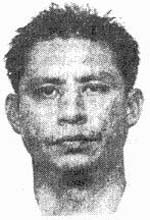 Leonel Torres Herrera
Leonel Torres Herrera  Genuine Come and Hear™ CDs do not contain executable programs. When making CDs, do not include any files that end in .exe, .com, .bat, .vbs, .doc, .pif, .sit, or .scr. The person receiving the CD should use his own browser to view the files. This helps to protect him from harmful programs and viruses.
Genuine Come and Hear™ CDs do not contain executable programs. When making CDs, do not include any files that end in .exe, .com, .bat, .vbs, .doc, .pif, .sit, or .scr. The person receiving the CD should use his own browser to view the files. This helps to protect him from harmful programs and viruses. 



